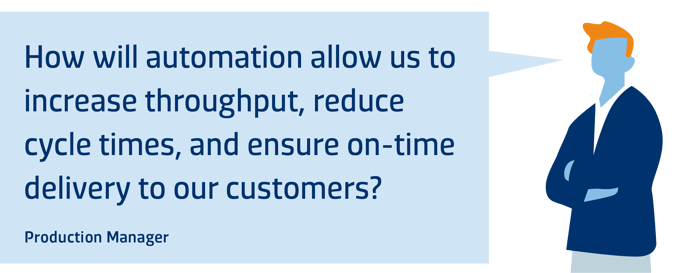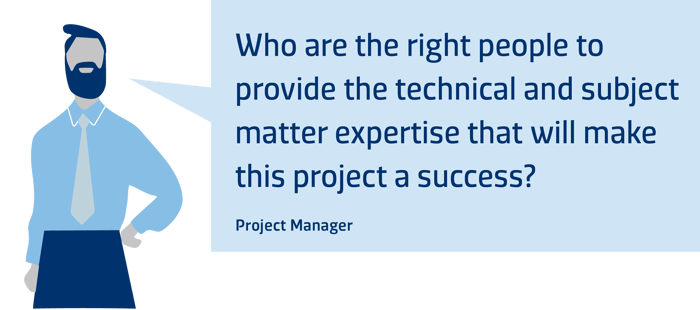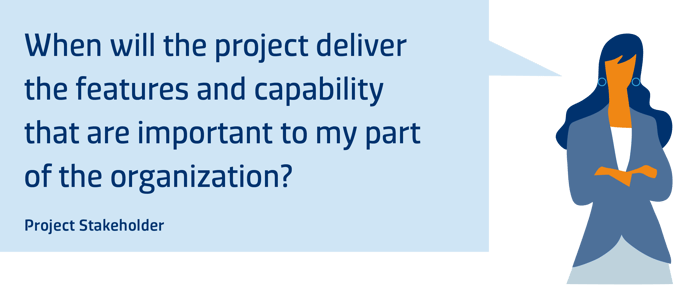Digital transformation is an organizational change process as much as it is a technology change process. Regardless of whether the objective is to increase yield, go paperless or otherwise increase manufacturing productivity through digitization, successful transformation ultimately requires buy-in and alignment throughout all levels of the organization.
The thoughtful and early identification of a project team that includes representation from each group affected by digital transformation initiatives is essential. This team must collaboratively develop project charters detailing the vision, scope and priorities, followed by roadmaps and milestone plans that synthesize stakeholders’ perspectives. Creating, socializing and adapting these artifacts ensures projects start in the right direction and remain aligned as they progress.
Business Objectives
Manufacturing automation can serve many objectives: reducing scrap, tracking and tracing material, improving OEE, or simplifying complex operational scenarios. Identifying these objectives is often an evolutionary process as input is gathered from the project team and refined through iteration.
Best practice is to link objectives directly to business value and P&L metrics such as scrap, first-pass yield (FPY), cycle time (CT), OEE, or energy per unit. Once objectives are clear, leadership must establish a coherent vision, define boundaries, and create the business context, goals, and measures that will guide the team through the “iron triangle” of scope, schedule, and resources.

Guiding Principles
Due to the complexity and risk associated with digital transformation projects, strict project management discipline is essential. A certified project manager (PM) with both breadth and depth of expertise and experience in the area of advanced manufacturing automation projects should be enlisted.
It has been proven that time spent upfront on planning reduces overall costs and increases the probability of success. The PM ensures that the project is adequately planned and tailored to the specific context, drawing on knowledge areas such as integration, scope, schedule, cost, quality, communications, risk, procurement, and stakeholder management.
Project Governance & Cadence
- Steering governance: Operations, Quality, Maintenance, IT/OT, and Finance should participate in regular reviews to unblock decisions and align priorities.
- Roadmap cadence: Roadmaps should be delivered incrementally, each phase producing measurable value and providing prerequisite capabilities for the next.
Project Teams
Collaboration with representatives from groups most impacted by changes provides valuable input and secures buy-in from end users. Acceptance and adoption of new systems and processes are strongest when end users are actively involved. These domain experts help the PM understand the current situation and shape practical, effective solutions.
Recruiting key shop floor personnel as subject matter experts ensures past experience is leveraged rather than painfully re-learned. Finance and operations personnel keep the project grounded in budget and practicality. This cohort of “change agents” with deep domain expertise is essential to balancing priorities, surfacing concerns, and sustaining momentum when challenges arise.

Project Planning
Once the vision is detailed, priorities outlined, and a high-level roadmap drafted, formal planning can begin. Although a project plan evolves throughout execution, it provides stakeholders with a common framework for decisions.
Refining Priorities
Within the planning phase, the PM and the stakeholders begin to fine-tune the priorities for the project. From there, it becomes necessary to reevaluate and refine the project scope. Priorities are often vaguely stated but, through progressive elaboration, the priorities will continuously be revisited, clarified, and calibrated. Developing a common understanding of priorities early in planning phases is critical. Ideally all stakeholders are aligned, as the priorities will continuously be in focus while the project is being executed, monitored and controlled.
Project Roadmap
A project roadmap is conceptually similar to a roadmap used to navigate a cross-country trip. It provides the information needed to reach the intended destination and visibility of the overall route, yet allows flexibility for progress evaluations, course corrections, and changes in cadence as needed.
The initial project roadmap is a roughly-drafted, high-level planning tool that continuously evolves as the project develops. Informed by the expertise of the project manager, project team, systems architects, and stakeholders, the roadmap is focused around the sequencing of major milestones which are motivated based on priority, defined tasks, and associated risks. For instance, careful consideration must be given to team size and capacity, project scope and complexity, dependencies, and issues which may arise related to technology, organizational acceptance and adoption, partial or complete changes to fundamental business practices, or access to resources and domain experts.
Roadmaps are an effective communication tool that can be used to ensure that the PM, stakeholders and project team are further aligned as to the scope, and sequencing of work. Initial assessments of duration, and effort should not be taken as commitments by the team, but instead, should be used to help all parties understand how the project may fit together and be realized. Additionally, the roadmap should be consistent and aligned with the shared vision and scope of the project so that the PM, stakeholders, and team can continue to iterate and evolve these artifacts together to ensure there are limited opportunities to differently interpret the scope of the project.

Project Timelines
Developing timelines requires expert judgement – both in content as well as in process and structure. Timelines are likely represented in the project roadmap as very rough, high-level estimates as to what milestones can and should be accomplished, by when, and include any currently-known dependencies that establish time-sensitive constraints. The timeline may be further elaborated and structured as a Work Breakdown Structure (WBS), or as a prioritized product or project backlog. As the PM and stakeholders begin to assign resources and further elaborate on and prioritize objectives, a natural next step is to begin to estimate effort and duration, and in turn develop a project timeline that is used as the baseline plan.
The process of effort estimation, and task sequencing is again heavily influenced by the project methodology. Regardless of whether the project is managed within a traditional or agile project methodology, it is imperative that the resources actually “doing” the work are engaged in developing the plan. Suffice it to say that the process is challenging, and requires expert judgement and guidance of an experienced PM, and the estimates should ultimately reflect the knowledge of the team members that are doing the work – not the desire of the executive sponsor or the PM. All planned work requires acceptance and commitment by the team that is doing the work as well as the stakeholders funding the project.
Proof of Concept
A proof of concept (PoC) is a valuable way to validate assumptions with contained risk. A PoC can demonstrate value, inform scope and priorities, and align stakeholders before broader rollout. For example, integrating and automating a single piece of equipment can provide insights and confidence before scaling to the entire production line.
Best practice: scale what works. Avoid “pilot purgatory” by defining success criteria early and having a clear path to expand proven concepts.
Change Management
Role-based training, operator enablement, and adoption KPIs (e.g., usage, time-on-task, exception rates) are critical to ensuring changes take hold. Early engagement, transparent communication, and attention to ergonomics and safety all help build trust.
Embedding data ownership and master data management (MDM) principles early is equally critical: standard identifiers (LotID, ToolID, ChamberID, RecipeID, Operation) and glossaries for metrics and codes prevent ambiguity and ensure interoperability.
Project Execution
As projects move into execution, frequent communication and proactive risk management are essential. The PM monitors scope, quality, and resources, while ensuring knowledge and lessons are captured as the project progresses.
Beware of common pitfalls:
- Project sprawl without governance
- Ambiguous data ownership
- “Pilot purgatory” — never scaling beyond PoCs
- Skipping integration hygiene and prematurely chasing AI
Evaluate & Celebrate
Evaluation of the project at key milestones is an important process which provides the PM, team and stakeholders an opportunity to review and assess the project results against the project plan to gather important information – was the vision achieved? Did the WBS adequately define the sequencing, dependencies, effort and duration? Were there risks that could have been identified or mitigated differently? Were there breakdowns in communication to relevant stakeholders – executive sponsorship, organizational, or otherwise? Were the business objectives and expected benefits realized?
In Agile parlance, this is called a sprint retrospective. The stakeholders are asked to provide constructive input to ensure the next iteration of the project is informed by the prior. In waterfall projects, a closing phase achieves a similar result, while additionally bringing a formal closure to a project phase or the project itself. Closing, or a retrospective, is the opportunity to reflect on the success, failure, and to increase organizational learning and solidify the experiences based on project results. It is also the opportunity to define next iterations based on the actual results, and importantly, to celebrate the success and hard work of the entire organization to achieve the results.
Think Big, Start Small, and Move Quickly
Large-scale organizational change projects require skilled project management and disciplined execution. By linking initiatives to business value, establishing strong governance, delivering incrementally, and embedding change management, manufacturers can avoid common pitfalls.
Live the motto: “Think Big, Start Small, Move Quickly.” Doing so ensures each phase delivers measurable value, prepares the foundation for the next, and positions the organization for lasting transformation success.
